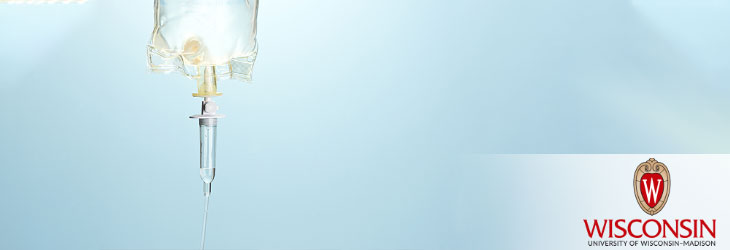Drug Delivery

Lipid-Free, Stabilized Emulsions for Delivering Anesthesia and Other Hydrophobic Drugs
WARF: P140337US02
Inventors: Sandro Mecozzi, Robert Pearce, William Tucker
The Wisconsin Alumni Research Foundation (WARF) is seeking commercial partners interested in developing a method for formulating non-lipid nanoemulsions that are especially stable and less susceptible to bacterial/fungal contamination.
Overview
Emulsions containing soybean oil have been used intravenously for more than 40 years. Recently they have been employed in the delivery of certain hydrophobic drugs such as anti-inflammatory agents and anesthetics like propofol (i.e., Diprivan).
Propofol is used extensively to induce and maintain general anesthesia as well as for sedation purposes. However, the oil used in the emulsion is highly susceptible to bacterial and fungal growth. To combat contamination, tubing and open vials of propofol must be replaced every 12 hours. The current formulation also may cause pain, lipid intolerance and other serious complications in some patients.
Propofol is used extensively to induce and maintain general anesthesia as well as for sedation purposes. However, the oil used in the emulsion is highly susceptible to bacterial and fungal growth. To combat contamination, tubing and open vials of propofol must be replaced every 12 hours. The current formulation also may cause pain, lipid intolerance and other serious complications in some patients.
The Invention
UW–Madison researchers have developed non-lipid nanoemulsions for delivering propofol and other hydrophobic compounds. The formulations contain miniscule droplets of semifluorinated block copolymers and perhalogenated fluorous compounds, such as perfluorooctyl bromide or perfluorodecalin.
These ingredients are capable of forming a stable nanoemulsion without the need for conventional lipid components (e.g., soybean oil) that support bacterial and/or fungal growth. The emulsions have enhanced stability with respect to droplet size due to decreased particle coarsening, coagulation and/or phase separation.
These ingredients are capable of forming a stable nanoemulsion without the need for conventional lipid components (e.g., soybean oil) that support bacterial and/or fungal growth. The emulsions have enhanced stability with respect to droplet size due to decreased particle coarsening, coagulation and/or phase separation.
Applications
- Nanoemulsions for formulating, delivering and releasing hydrophobic drugs including propofol
Key Benefits
- Lipid-free and very stable
- Solves the problem of bacterial/fungal contamination
- Highly versatile
- Supports controlled drug release
- Nanoemulsions are intrinsically more stable and absorbable in vivo.
Stage of Development
The new emulsions have been tested in animals.
Additional Information
For More Information About the Inventors
Tech Fields
For current licensing status, please contact Rafael Diaz at [javascript protected email address] or 608-960-9847